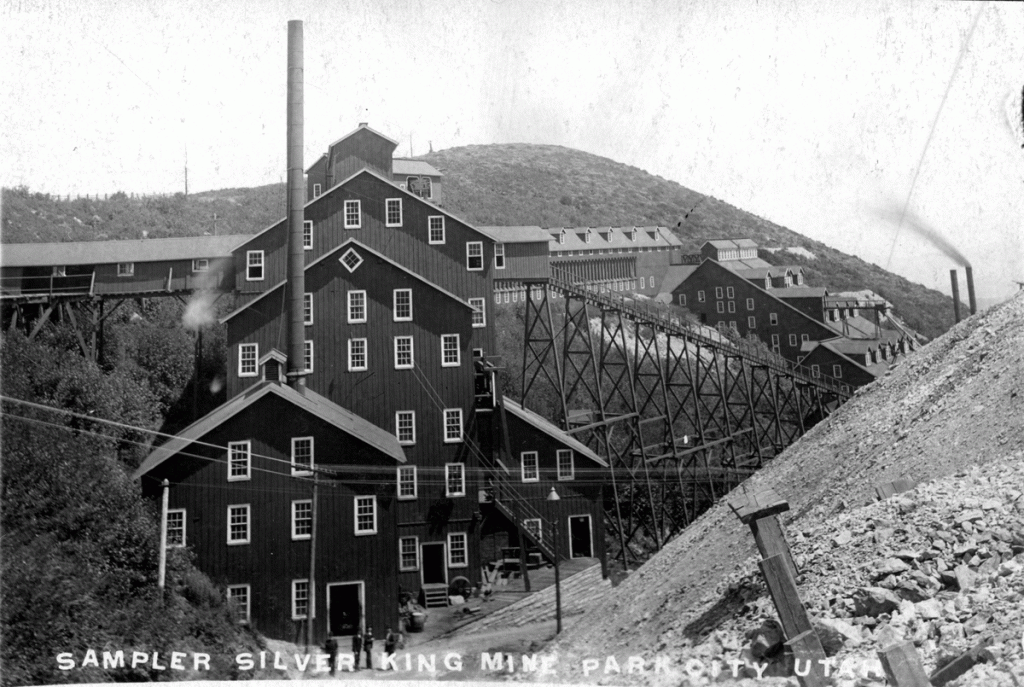World-class is an adjective often associated with Park City. It is one of the world’s foremost resort towns. The athletes who live and ski here are of the highest caliber. Their training facilities are among the best in the world. Much the same could be said of Park City at the turn of the twentieth century.
On June 6, 1901 the Silver King Mining Company put its model tramway and sampler into operation. Silver King Manager and soon to be U.S. Senator, Thomas Kearns, proclaimed the new mining facilities “equal in every respect to the best in use in the world.” Skilled engineers from across the United States and many other countries echoed his sentiments. No mine in the known world was better equipped than the great Silver King of Park City.
The sampler, through a series of hoppers, bins, crushing machines, conveyor belts, rollers, grinders, elevators and screens, reduced 175 tons of crude ore to four one-pound representative samples of lead, silver, and gold in five hours. The accuracy of the samples was nearly 100% when compared to the percentage of lead, silver, and gold found in the original 175 ton load. The sampler building anchored the mine terminus of the Silver King aerial tramway; it measured 71 feet by 52 feet and was 95 feet tall.

Credit: The Park City History Society & Museum, Mel Fletcher Digital Collection
The aerial tramway carried the crude ore product of the sampler 7,000 feet to the Rio Grande Western loading station at the lower end of Park City in 60 large-sized buckets. Each of the seven cubic foot buckets carried about 800 pounds of product. The buckets were spaced 175 feet apart on the tramline. The tramway helped to double the Silver King’s output and reduced the cost of transporting crude ore and concentrates from the mine to the railway by 85%.
A distinctive feature of the Silver King aerial tramway was the use of steel towers to support the wire ropes instead of the usual wooden ones. A bridge designing company, Gillette-Herzog Manufacturing Company of Minneapolis, Minnesota made the tower sections of 4” x 4” angle iron. The tallest of the thirty-nine towers was 85 feet, the shortest 16 feet. The towers were located at a distance of about 180 feet apart with the greatest distance between the tower supports being 200 feet.
To this day, the towers stand rigidly at attention on Treasure Hill. Stout and strong sentinels, they form a picket line of protection, silently guarding Park City’s past.
Gone now are two of the most imposing structures ever erected in Park City: the historic sampler building and the iconic 85 foot tall x 66 foot x 60 foot loading station, which was carelessly destroyed by fire in July of 1981.
Please join us here again next week for the story of the men who built the tramway and sampler.